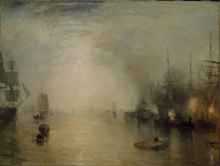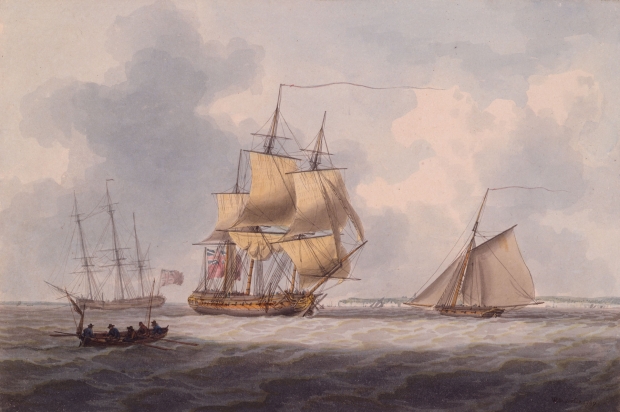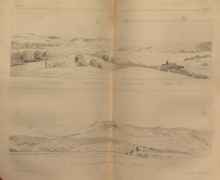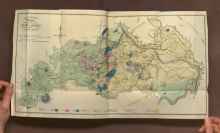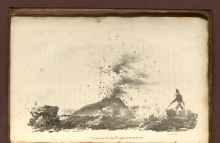Keelmen Heaving Coals by Moonlight
Keelmen Heaving Coals by Midnight was comissioned by cotton-spinner Henry McConnell along with the painting Venice: The Dogana and San Giorgio Maggiore. It was meant to show Britain's rise as a mercantile power beside the decline of the once dominating Venice (J. Hamilton, Late Seascapes 31, 34).
Seascapes and National Pride in Romantic Visual Culture
Even in a setting evocative of the mundane—such as that of laborers working through the night in JMW Turner’s
History of the Extinct Volcanoes of the Basin of Neuwied on the Lower Rhine
This portrayal of the Eifel mountain range further suggests that Romantic culture was developing an increasingly scientific interest in volcanism. The content of the image is neither sublime nor picturesque, yet the book it illustrates—a scientific work concerning the origins of volcanoes—sells very well and is consumed voraciously by the reading public.
The Volcanic District Bounded by the Rivers Nette and Bruhl on the Lower Rhine
This topographical portrayal of the Eifel mountain range suggests that Romantic culture was developing a more scientific interest in volcanism. The image evokes neither the sublime nor the picturesque, yet the book it illustrates—a scientific work concerning the origins of volcanoes—sells very successfully.
The Small Cone, from the S.E. Summit of the Great Cone
This depiction of Mount Vesuvius represents Romantic culture’s new, more scientific approach to volcanoes, which began to be seen as an attraction for volcanologists and tourists alike. As demonstrated by the human figure—who appears to be performing a hands-on investigation of sputtering lava—the image shows that one can successfully study volcanoes in action.
A Map of Vesuvius
This portrayal of Mount Vesuvius’ previous lava flow hints that Romantic culture was cultivating a new interest in volcanism, bolstered by scientific advancements. The image’s significance is neither sublime nor picturesque, yet John Auldjo still drew, copied, and sold this map successfully.


